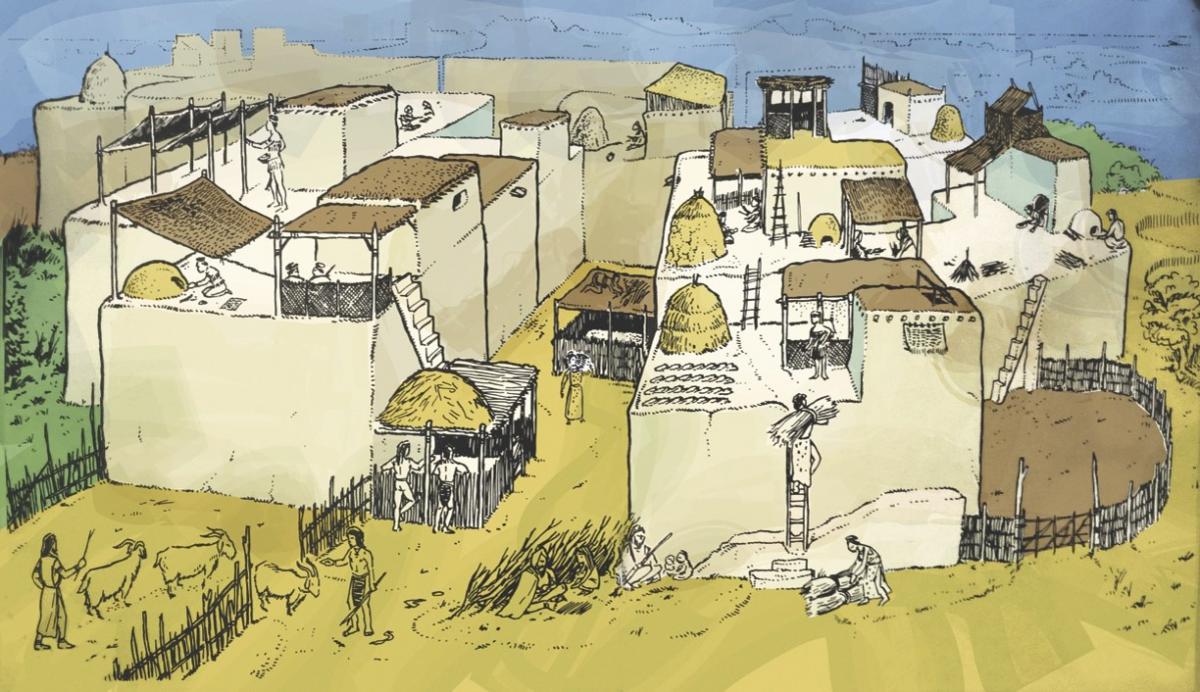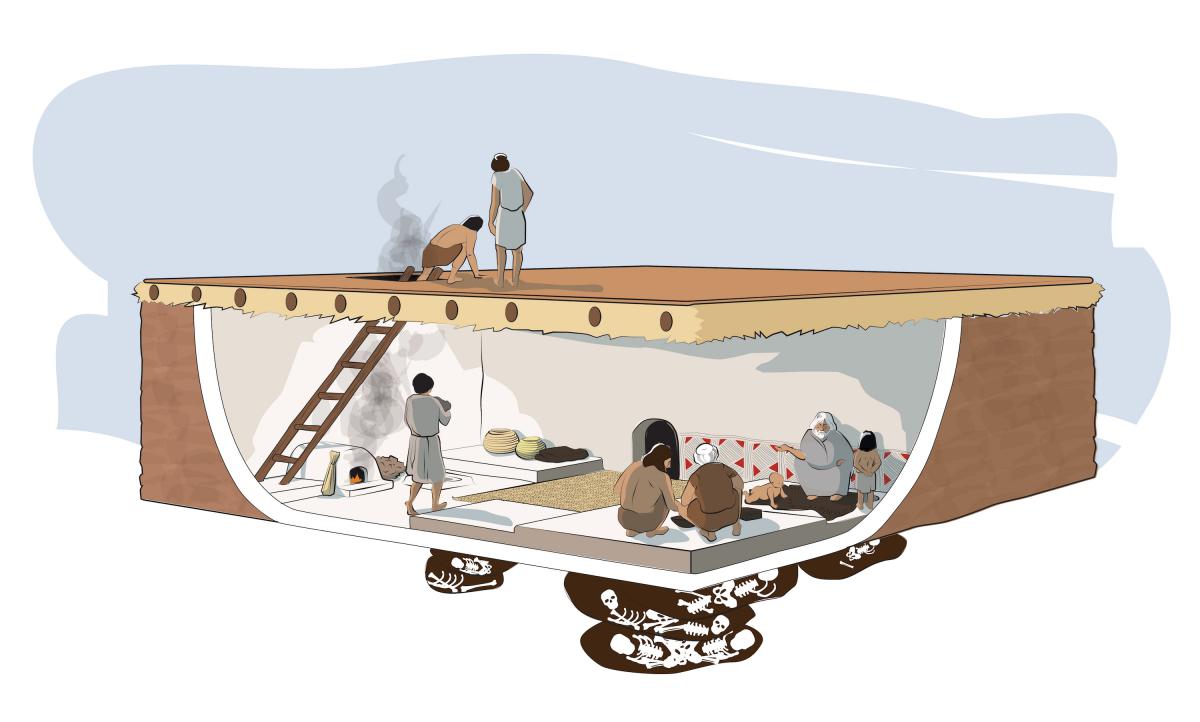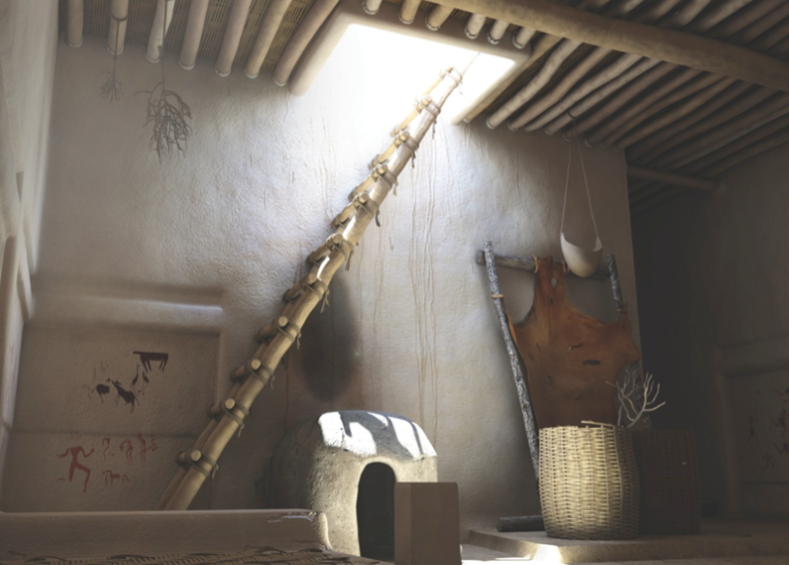Architecture
One of Ҫatalhöyük’s most defining attributes was its inhabitants’ gradual, continuous building and rebuilding of their houses. These houses were very important to all aspects of their lives: material, social and ritual. Houses were roughly rectangular and closely built together with no streets in-between. Instead, people moved around on roofs and accessed their homes down a wooden ladder via an opening in the ceiling.

All the houses found at Ҫatalhöyük are different in shape and size, yet most follow a general layout. Each central room had an oven below the stairs where people carried out domestic tasks such as cooking. Raised platforms within the rooms were used for sleeping and other domestic activities. Beneath these platforms inhabitants buried their dead. Side rooms were accessed off the central room providing essential storage areas.


Like we do today, people decorated their homes. At Ҫatalhöyük we see white plastered walls and floors, on which elaborate paintings were made depicting hunting scenes and geometric patterns. The walls were constructed of mud bricks. Evidence suggests that the wet clay mixture was either placed directly on the wall between wooden boards or constructed using mortar and sun-dried bricks. This tradition seems to have carried on over time to the present day, as we see similar construction methods used in the local region now. Thick wooden posts were erected in the central room and may have been used to strengthen the structure, as well as create internal divisions of space.
People took great care of their houses and meticulous planning was an important part of the building process. We know that houses were continually infilled, often burnt and rebuilt throughout the site’s occupation, eventually creating the mound that we can see on site today.